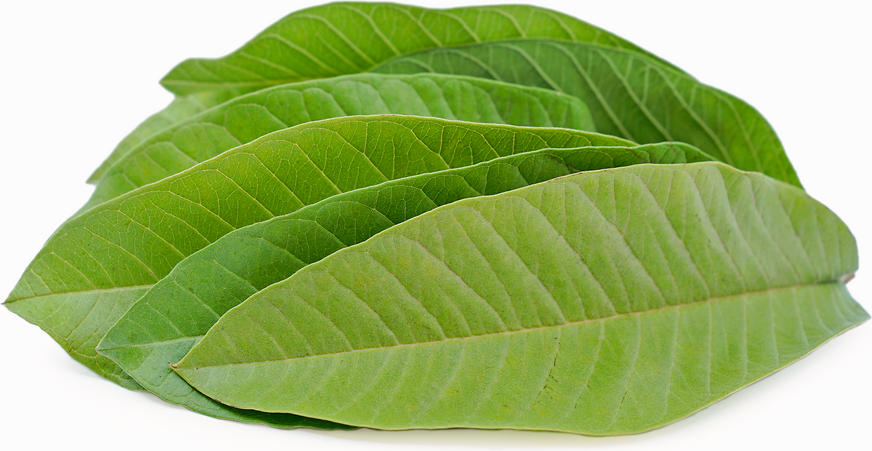


Guava Leaves
Estimated Inventory, lb : 0
Description/Taste
Guava leaves are oblong to oval in shape and average 7-15 centimeters long and 3-5 centimeters wide. The leaves grow in an opposite arrangement, which means two leaves grow at the same point on either side of the stem, and have short petioles, or stalks that join the leaf to the stem. The surface of the deep green Guava leaf is wide and leathery with faint white veins and some light brown patches. Guava leaves are aromatic when crushed and have a scent similar to that of the guava fruit. Guava leaves grow on a small tree with wide-spreading branches and copper-colored flaking bark that reveals a green base.
Seasons/Availability
Guava leaves are available year-round.
Current Facts
Guava leaves, botanically classified as Psidium guajava, are members of the Myrtaceae, or myrtle family along with eucalyptus, allspice, and clove. Guava leaves have been used in traditional Eastern medicine since ancient times and have recently gained in notoriety as an alternative natural medicine.
Nutritional Value
Guava leaves have many anti-inflammatory properties and also contain vitamin C, vitamin B, antioxidants, and tannins.
Applications
Guava leaves are most popularly consumed in tea, as capsules, ground into pastes, and extracted as essential oils. Young leaves are traditionally preferred for medicinal benefits and can be found in health stores in various forms. They can also be found dried and ready for use in specialty tea stores. When dried, the leaves can be crushed and boiled to make the medicinal tea.
Ethnic/Cultural Info
Guava leaves have traditionally been used in Eastern medicine as a diarrheal remedy and to reduce symptoms of food poisoning. They have also been used in China and India as a method to reduce symptoms of coughs and aid in digestion. In addition to oral remedies, Guava leaves are also being used in Brazil and Mexico externally to reduce symptoms of skin and body wounds.
Geography/History
The guava tree is believed to be native to Mexico, Central America, and the Caribbean and then spread to tropical and sub-tropical regions of the Americas, Australia, and Asia. Today guava trees are being produced in India, Nigeria, Philippines, Southeast Asia, Pakistan, Bangladesh, Brazil, China, and Mexico and the leaves can be found in specialty markets and online stores across the world.
Recipe Ideas
Recipes that include Guava Leaves. One
| VN Cooking |
|
Steamed squid guava leaves |
| Sinamon Tales |
|
Guava Leaf Chutney |




